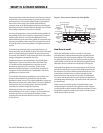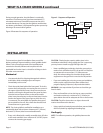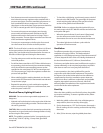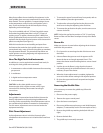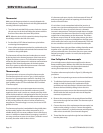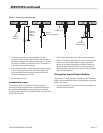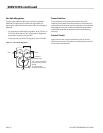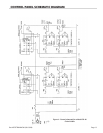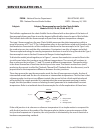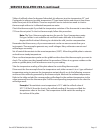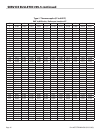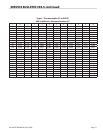
Part #GCGTRAINING06 (03/03/08) Page 15
Tables of millivolt values for degrees Fahrenheit (at reference junction temperature 32˚) and
Centigrade (at reference junction temperature 0˚) have been written and extracts from these
tables form part of this bulletin. These are required if service technicians need to check a
thermocouple without a J calibrated temperature meter.
Check the thermocouple if you nd the temperature variation of the thermostat is more than ±
5˚F from the set point. To check a thermocouple, follow this procedure:
Note: The Type J thermocouple requires the use of a Type J temperature meter.
If a type J meter is not available use a millivolt meter and refer to the tables of
degrees/millvolt values following, to calculate the cold junction compensation.
Remember that the accuracy of you measurements can be no more accurate than your
instruments. Thermocouples generate very small voltages. Many voltmeters cannot read
millivoltages accurately.
Set all control thermostats to the same temperature (350˚F). Allow the griddle plate to saturate
and achieve a steady temperature.
Place a surface temperature probe on the griddle surface about the thermocouple you want to
check. The surface must be cleaned before this procedure. If there is any grease residue on the
probe or griddle plate, it will introduce an error in your reading.
Take the temperature reading of the plate above the controlling thermocouple.
Disconnect the thermocouple from the temperature and, either connect it to a J type calibrated
temperature meter to measure the temperature output directly or, do the following: measure
and record the millivolts generated by the thermocouple. Measure the ambient temperature.
Refer to the table and add the corresponding millvoltage for the ambient temperature to the
value measured from the thermocouple. Find the corresponding temperature in the chart for
millvoltge result.
Example: if the ambient room temperature is 20˚ C add the millvolt value of
20˚C (1.019mV) from the chart to the millvolt reading of the meter and nd the
temperature value in the chart. The temperature should match the reading on
the surface of the plate.
SERVICE BULLETIN #95-5 continued



